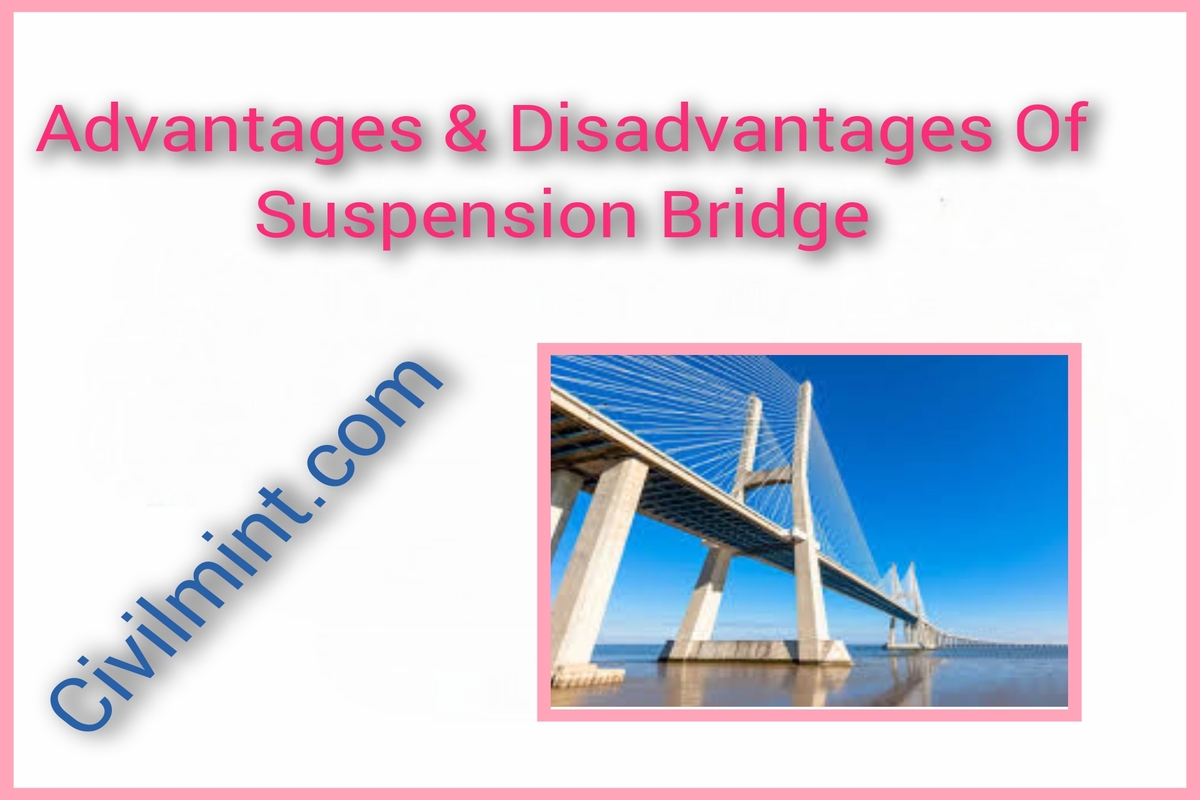Suspension bridge is very popular type of bridge. We wil learn all the advantages & disadvantages of suspension bridge.

Table of Contents
Introduction:
Suspension bridges are an important engineering marvel that allows for traversing larger distances over physical barriers such as rivers, valleys, and other bodies of water.
Civil engineers are well-versed in the advantages and disadvantages of building suspension bridges and the solutions they can provide.
In this blog article, we will delve into the various advantages and disadvantages of suspension bridges, how they are used in civil engineering, and why they remain popular among engineers.
Suspension bridges are one of the oldest bridge types in existence, with the first suspension bridge built over 2,100 years ago in China.
Despite their long history, suspension bridges continue to evolve as new technologies and materials are used to improve their design and performance.
Advantages Of Suspension Bridges:
One of the primary advantages of suspension bridges is their strength and durability. The cables that support the bridge deck can be very thick, allowing the bridge to support a large amount of weight. This makes them ideal for carrying heavy traffic, such as vehicles and trains. Suspension bridges can also span very long distances, up to 2 kilometers, much longer than any other type of bridge.
Suspension bridge can withstand high winds and earthquakes, and the bridge deck’s flexibility can absorb the energy of moving traffic, providing a smoother ride for vehicles and trains.
Suspension bridge also require relatively few intermediate supports compared to other types of bridges. This allows them to be constructed over deep valleys while still having foundations much closer together than other types of bridges. While this feature is valuable in many situations, it can make them prone to more significant damage than other types of bridges during times when heavy loads pass over the bridge or in strong winds.
Suspension bridges are the perfect choice for long spans and can be designed to be lightweight to limit their dead weight. They rely on the tension and compression of the deck to support their overall weight without external supports. Lightweight suspension bridges can even use chains instead of cables.
Suspension bridges have a number of advantages over other types of bridges. They can be built in areas that are difficult to access by building conventional bridges, directly linking separate geographical locations. They are usually cheaper to build since they need less concrete, with the weight spread out over a greater length.
Maintenance costs for suspension bridges are lower since the cables and supports do not require painting or sealing like other bridge types. The Golden Gate Bridge in San Francisco, California, is an example of a suspension bridge completed in 1937.
Disadvantages of Suspension Bridges:
One of the biggest disadvantages is their high cost. The cables and supports needed to build a suspension bridge can be very expensive.
Suspension bridge can take a long time to build, causing disruptions to traffic and local businesses.
Another major disadvantage is that suspension bridges require very large foundations, which can be a problem in areas with unstable ground and poor soil.
The problem with suspension bridges is that they rely on support from cables anchored at each end of the bridge. When you pick up one end of a long piece of string and hold it out in front of you, it will dangle freely because there is no tension applied to it. If you hang something from that piece of string – perhaps a bowling ball – it will weigh down one end more than the other, causing some pulling on the string but overall not much tension.
Closing Thought:
Suspension bridges offer many advantages over other types of bridges, including their strength, flexibility, ability to span long distances, and cost-effectiveness.
However, they also come with some disadvantages, such as their high cost, long construction time, and large foundation requirements.
Despite these drawbacks, suspension bridges remain a popular choice for engineers, thanks to their ability to provide solutions to challenging engineering problems.
Faqs
Suspension bridges require complex and expensive maintenance due to their cable system.
Suspension bridges are lightweight, making them easier to transport and build in remote locations.
